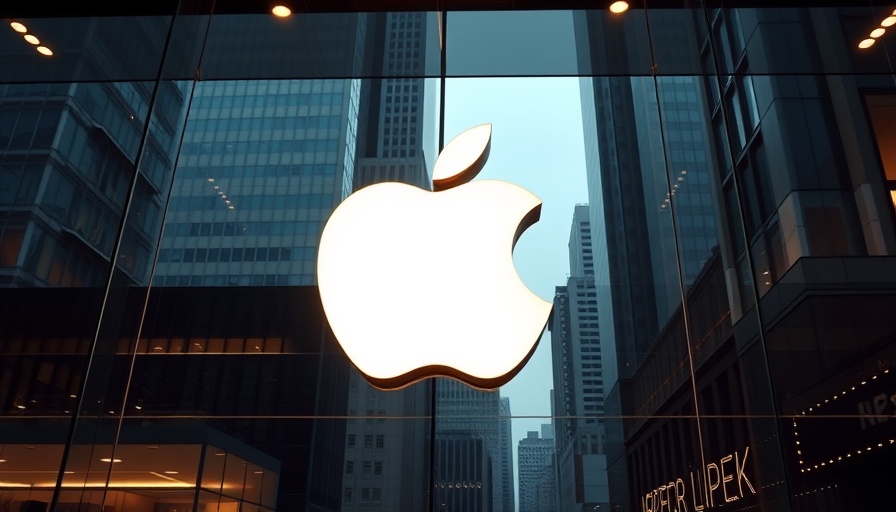
Apple's Shift: Sourcing Strategy Amid Tariffs
In a bold move to mitigate the financial impact of U.S. tariffs, Apple has announced that the majority of its devices, including iPhones and iPads, will soon be sourced from India and Vietnam. This shift represents a significant strategic pivot in response to the evolving tariff landscape, particularly under President Donald Trump’s administration.
Understanding the Tariff's Impact on Business
The announcement comes during a time of heightened tension in U.S.-China trade relations. As tariffs rise, companies like Apple are compelled to explore alternative production locations to minimize expenses. Apple CEO Tim Cook revealed that the anticipated costs associated with tariffs could reach as much as $900 million in the next quarter alone. Despite this, Apple’s confidence appears unwavering, given their reported earnings of $24.78 billion in the first quarter—exceeding Wall Street's expectations. This indicates that even with the tariff implications, the demand for Apple products remains robust.
The Role of Emerging Markets
India and Vietnam's growing manufacturing capabilities make them prime candidates for Apple’s relocation strategy. With a rich pool of skilled labor and increasingly favorable trade conditions, both countries offer a compelling alternative to traditional manufacturing hubs. The move not only helps Apple reduce costs but also diversifies its supply chain, which is crucial in today's unpredictable market. This strategy aligns with global trends where tech companies are rapidly seeking to minimize reliance on any single country, particularly China, amidst ongoing trade tensions.
Broader Implications for the Tech Industry
Apple's decision may set a precedent for other technology companies. As the scramble for cost-effective and reliable manufacturing intensifies, more firms are likely to rethink their supply chain strategies. Companies such as Samsung and Dell may also explore similar pathways to avoid the financial strain of tariffs, further altering the landscape of global tech production.
Future Predictions: What Lies Ahead for Apple?
Looking forward, the outcome of Apple's strategy will be critical. The reliance on multiple countries for manufacturing could insulate the company from future tariff challenges but introduces complexities like quality control and logistics management. If successful, Apple may set a powerful example of adaptability in a challenging economic climate.
Consumer Reactions: Pricing and Product Availability
As Apple navigates these changes, consumers are likely to experience fluctuations in pricing and product availability. The strategies implemented will play a significant role in determining whether prices will spike due to increased manufacturing costs or stabilize as Apple innovates within these new parameters. Apple has often focused on maintaining premium pricing; however, the ongoing economic stresses will likely push the company to balance quality with affordability to retain its market edge.
Conclusion: A Future Directed by Globalization
As Apple forges ahead with its new sourcing strategy, the approach underscores the growing importance of globalization in the tech sector. By expanding its manufacturing footprint in India and Vietnam, Apple is not just adjusting to current conditions, but also setting itself up for sustainable growth. Whether other companies will follow suit remains to be seen, but the implications of these shifts promise to reverberate throughout the industry.
 Add Row
Add Row  Add
Add 




 Add Row
Add Row  Add
Add 

Write A Comment